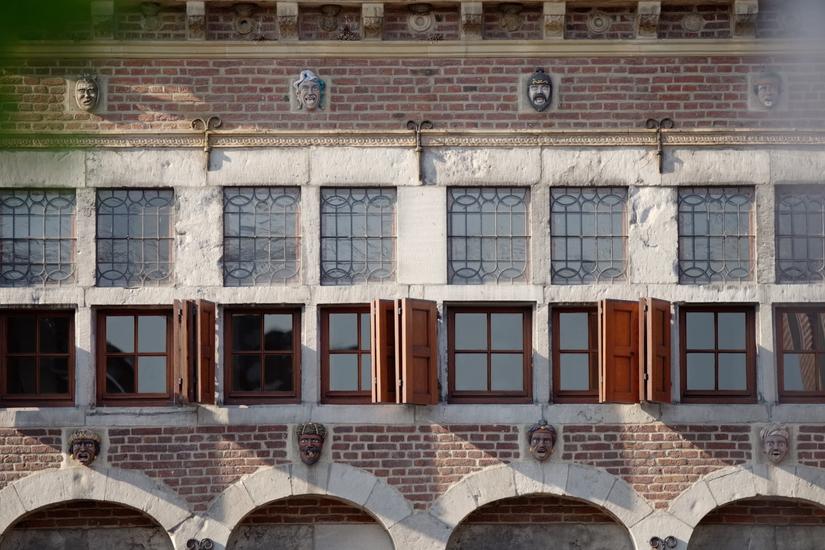Maaseik's historical buildings and monuments are characterised by the Maasland architectural style. This is an architectural style from the 17th and 18th centuries, mainly found in Dutch Limburg, Belgian Limburg and the Voer region. It was applied to mansions, large square farms, castles and monasteries.
The house 'de Gapers', Bleumerstraat no. 47 , is one of the finest examples in Maaseik.
The Maasland building style or Maas style (sometimes erroneously called Maasland Renaissance) has the following characteristics:
- the use of local materials such as bricks from the field ovens, marl (Maastricht) and limestone or bluestone (Namur)
- wide-house arrangement (this means there is no gable end on the street side)
- cross-framed windows with limestone frames and oak shutters
- horizontalism (heavy and wide roof overhang, cornices, wall bands and water cornices)
- rather low door with a window above it (an oval window is called an ox eye)
- cellar door


